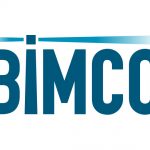The U.S. Department of State has published the December 2024 Visa Bulletin, providing important updates on the availability of immigrant visas in various categories, particularly for Indian nationals. The bulletin highlights limited movement in employment-based green card categories and offers new insights into final action dates and filing dates, crucial for those seeking permanent residency in the U.S.
Employment-Based Visa Categories: December Cutoff Dates
The December Visa Bulletin sets forth the cutoff dates for employment-based (EB) visa categories, indicating the earliest possible dates when applicants can either be approved for a green card or have their status adjusted. Below are the key updates for Indian nationals:
Adjustment of Status Applications: Pending USCIS Decision
The U.S. Citizenship and Immigration Services (USCIS) has yet to announce whether the final action dates or dates for filing chart will apply to December’s adjustment of status applications. Applicants are advised to monitor the USCIS Visa Bulletin webpage for updates, as this decision will determine when they can file for permanent residency or adjust their status.
What are Final Action and Dates for Filing?
- Final Action Date: This is the date when applicants can expect a decision on their green card application, based on their priority date and nationality.
- Date for Filing: This is the earliest date when applicants can submit their adjustment of status or immigrant visa applications.
Family-Sponsored Immigrant Visas: Key Developments
The December Visa Bulletin also provides updates on family-sponsored immigrant visas, which allow family members of U.S. citizens and permanent residents to obtain green cards. The issuance of these visas is largely determined by priority dates and demand. When the number of applicants exceeds the number of available visas, certain categories may become oversubscribed, leading to the establishment of final action dates.
Key Updates for Family-Sponsored Visas (India):
- F1 (Unmarried Sons and Daughters of U.S. Citizens): Final action date remains at October 22, 2015 (no change).
- F2A (Spouses and Children of Permanent Residents): The cutoff date advances to January 1, 2022, up from November 22, 2021.
- F2B (Unmarried Sons and Daughters of Permanent Residents): Final action date stays at May 1, 2016.
- F3 (Married Sons and Daughters of U.S. Citizens): The final action date moves forward to April 15, 2010, up from April 1, 2010.
- F4 (Siblings of Adult U.S. Citizens): Final action date advances to March 8, 2006, from March 1, 2006.
Family-Sponsored Green Cards: Final Action and Filing Dates (India)
- F1: Remains at October 22, 2015 (no change).
- F2A: Advances to January 1, 2022, from November 22, 2021.
- F2B: Stays at May 1, 2016.
- F3: Advances to April 15, 2010, from April 1, 2010.
- F4: Advances to March 8, 2006, from March 1, 2006.
Employment-Based Green Cards: Final Action Dates
The final action dates for employment-based green cards for Indian nationals have been updated as follows:
- EB-1 (Priority Workers): February 1, 2022 (no change).
- EB-2 (Advanced Degree Professionals): August 1, 2012, up from July 15, 2012.
- EB-3 (Skilled Workers, Professionals, and Other Workers): Advances to November 8, 2012, from November 1, 2012.
- EB-4 (Special Immigrants, including Religious Workers): Remains at January 1, 2021.
- EB-5 (Investors, including C5, T5, I5, and R5): Remains at January 1, 2022.
- EB-5 Set-Aside (Rural, High Unemployment, and Infrastructure Projects): Remains Current, meaning no backlog for these categories.
Employment-Based Green Cards: Dates for Filing
The dates for filing for employment-based green cards are as follows:
- EB-1: Advances slightly to April 15, 2022, from April 14, 2022.
- EB-2: Remains at January 1, 2013.
- EB-3: Remains at June 8, 2013.
- EB-4: Remains at February 1, 2021 (for religious workers and other special immigrants).
- EB-5 Unreserved: Remains at April 1, 2022.
- EB-5 Set-Aside: Remains Current, meaning no backlog exists for rural, high unemployment, and infrastructure investors.






